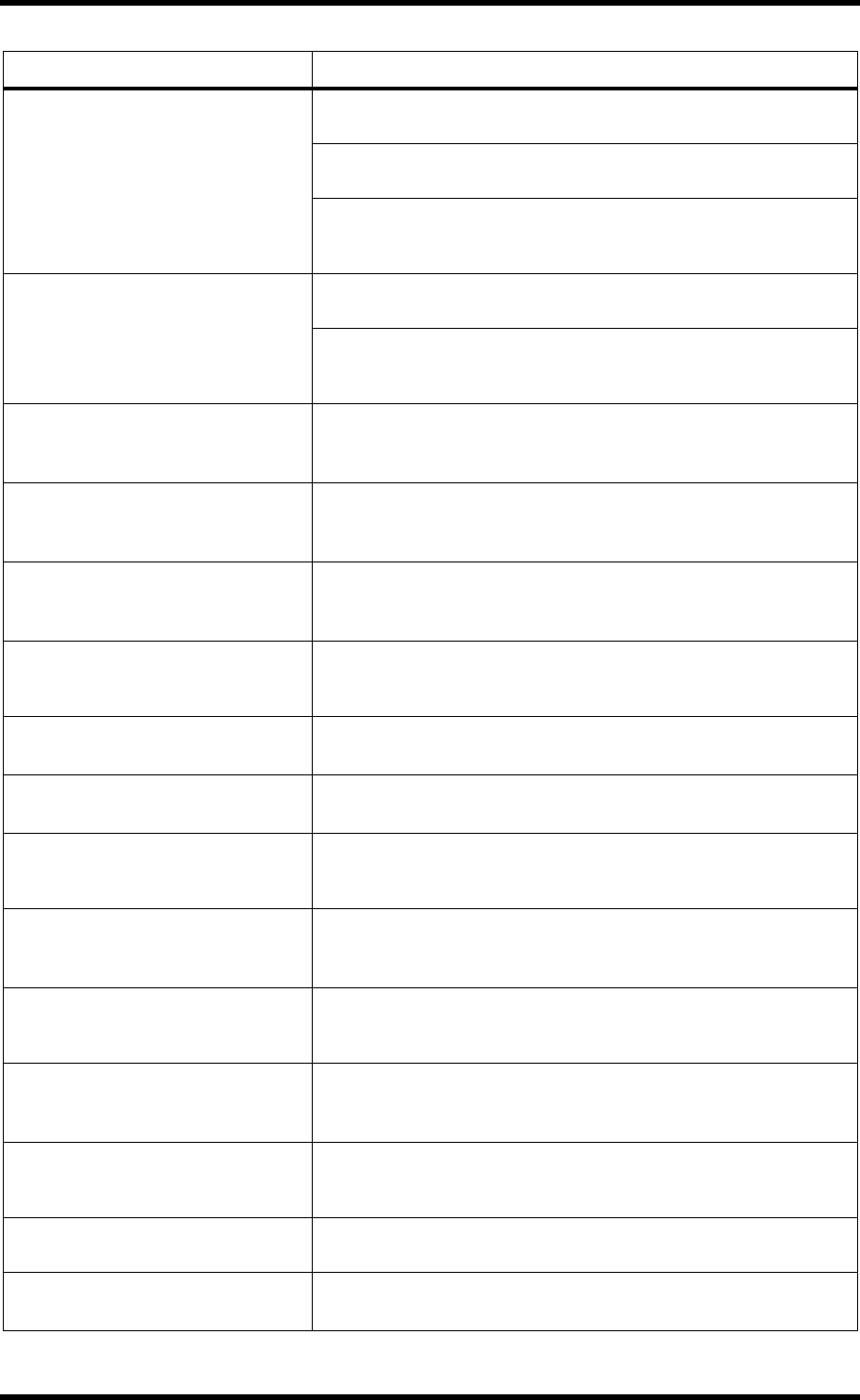
254 Troubleshooting
01V—Owner’s Manual
Input signals are present but the
monitor output and phones are
dead.
Make sure that the MONITOR–2TR IN switch is set to MONITOR. See
“Using Monitor” on page 78 for more information.
Make sure a monitor SOURCE is selected on SETUP page 2. See “Mon-
itor Setup” on page 78 for more information.
Make sure that the MONITOR OUT LEVEL (or PHONES LEVEL) control
is turned up. Also check the MONI TRIM parameter on SETUP page 2.
See “Monitor Setup” on page 78 for more information.
Solo mode is selected but nothing
can be heard.
Make sure that the MONITOR–2TR IN switch is set to MONITOR. See
“Two-track Input (2TR IN)” on page 77 for more information.
Make sure that the MONITOR OUT LEVEL (or PHONES LEVEL) control
is turned up, and that the SOLO TRIM control on SETUP page 2 is
turned up. See “Using Solo” on page 81 for more information.
Solo doesn’t function as expected
and the [SOLO] button indicators
light up instead of flashing.
Check whether or not the Solo function is enabled. See “Solo Setup”
on page 80 for more information.
Channels seem to run out of
headroom, especially when EQ
boost is applied.
Use the Attenuator function on the EQ page to reduce the level. See
“Attenuating Input Channel Signals” on page 43 for more informa-
tion.
The Digital Stereo Coaxial In signal
appears on input channels 13 and
14.
Probably because the Digital Stereo Coaxial In is flipped with inputs
13 and 14. See “Digital Stereo In” on page 213 for more information.
Cannot hear signals connected to
inputs 13 and 14.
Probably because these inputs have been flipped with the Digital Ste-
reo Coaxial In on PAN/ROUT page 4. See “Digital Stereo In” on page
213 for more information.
The 2TR IN signal appears on input
channels 15 and 16.
Probably because the 15/16–2TR IN switch is set to 2TR IN. See
“Two-track Input (2TR IN)” on page 77 for more information.
Cannot hear signals connected to
inputs 15 and 16.
Probably because the 15/16–2TR IN switch is set to 2TR IN. See
“Two-track Input (2TR IN)” on page 77 for more information.
Cannot select the bus out master
faders.
Bus out master levels are set using the virtual faders on PAN/ROUT
page 3. See “Setting Bus Out Master Levels” on page 109 for more
information.
Recordings made via the Digital
Stereo Coaxial Out or Option I/O
sound grainy.
Make sure that the Dither function is set to match the wordlength of
the digital recorder. See “Output Dither” on page 212 for more infor-
mation.
Digital Stereo Coaxial In and Option
I/O digital input signals sound noisy.
Make sure that all digital audio equipment is wordclock synchronized
to a common wordclock source. See “About Wordclocks” on page
206 for more information.
Input channels are configured as a
stereo pair but the signal appears to
be mono.
Make sure that the odd channel is panned hard left and the right
channel is panned hard right. See “Panning Input Channels” on page
47 for more information.
Configured a stereo pair but the
signal sounds out of phase.
Make sure that the phase of both input channels in the stereo pair is
set the same. Phase settings are not linked when channels are paired.
See “Changing the Input Phase” on page 42 for more information.
Signals sound delayed.
Make sure that the Channel Delay function is set correctly. See “Delay-
ing Channel Signals” on page 45 for more information.
Added faders to a fader group but
grouping does not work.
Make sure that the fader group is enabled. See “Grouping Faders” on
page 55 for more information.
Symptom Advice


















